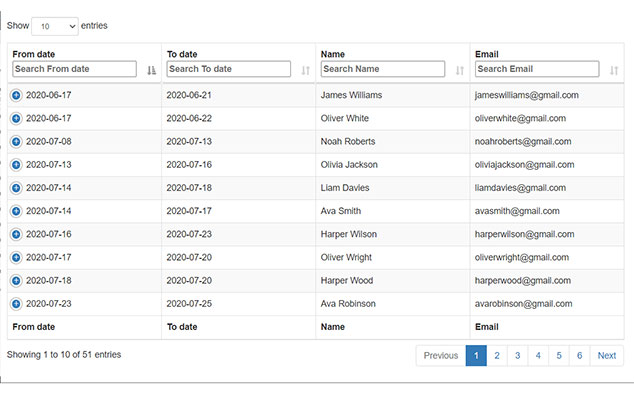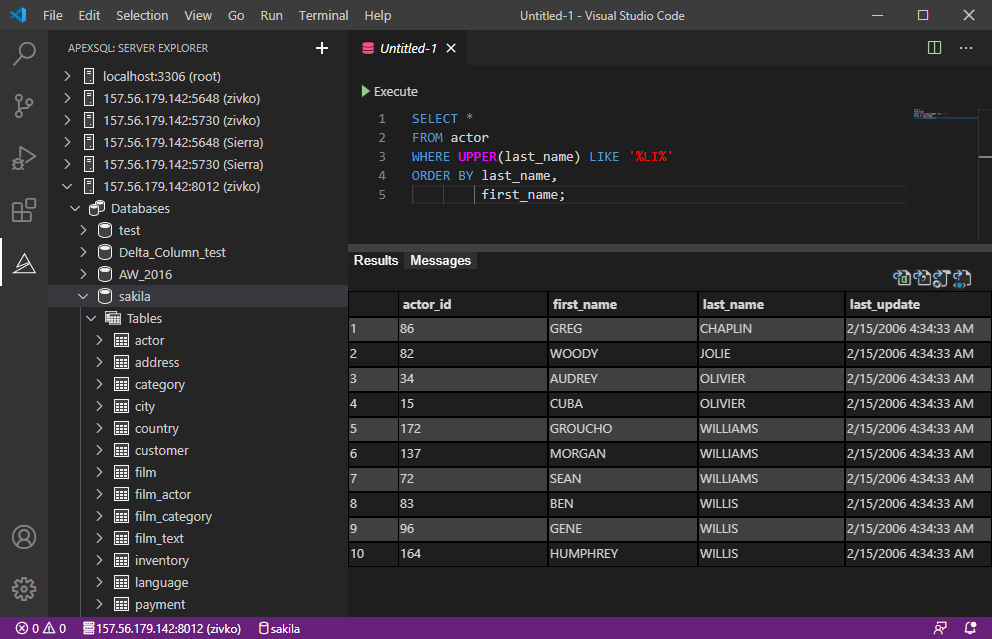

display records if there are records to display Query("SELECT * FROM players ORDER BY id")) View.php (non-paginated - will just display one long list of members) Save these php files all in the same folder in a place where you can run them using your server (I'm assuming you are using something like WAMP for the server? I'm not sure if Dreamweaver includes something like that by default.) INSERT INTO `players` VALUES(4, 'Sam', 'Smith') INSERT INTO `players` VALUES(3, 'Rachel', 'Roberts') INSERT INTO `players` VALUES(2, 'Tim', 'Thomas') INSERT INTO `players` VALUES(1, 'Bob', 'Baker') ) ENGINE=MyISAM DEFAULT CHARSET=latin1 AUTO_INCREMENT=5 PHPMyAdmin will create all of the necessary tables/import some test data for you to play with txt file on your desktop, and import it into your database. Once you've created the database, make sure the database is selected, then click the "import" tab

Save the included sql file on your desktop as a. You'll need to create a database (I named mine 'records' but it can be changed) using PHPMyAdmin
VIEW RECORD DETAILS IN MY VISUAL DATABASE HOW TO
How to create a system that allows a user to add/edit/remove data in a database seems to be a commonly asked topic, so I may adapt this into an actual tutorial at some point in the future. I'm also happy to help with any questions (please post questions in a new topic.)
VIEW RECORD DETAILS IN MY VISUAL DATABASE CODE
I know it may seem a lot to understand at first, but read all the comments in the code - I try to explain what I am doing step by step. This is just a basic starting point for projects that require view/edit/delete functionality. The code I've created could be a starting point for that (it only includes fields for their first name/last name, but could obviously could be expanded to use more fields). It's a basic system that allows you to:īasically, just imagine that you are in charge of a sports team, and you want to keep a list of all your player's contact information. Yes, I realize I could use OOP, or could separate some of these out into methods, etc. Do realize that it is intended for beginners, so I didn't want to do anything too advanced that might lead to confusion. If there are issues I haven't noticed, please let me know. (Anyone with PHP knowledge is welcome to comment on the code. It's available in the KillerSites University ( - subscription required) under PHP > PHP CRUD Videos. I have also recorded a 8 part video tutorial (a bit over an an hour worth of video) showing how to build this system and explaining it as I go. I've also provided a modified view.php file that shows one way to do basic pagination. MySQLi, often called MySQL Improved, has several advantages over regular MySQL, including support for prepared statements (which helps prevent SQL injection, a common security issue) and object-oriented code. This is a revised version of my previous tutorial ( ) which uses MySQLi rather than regular MySQL to connect to the database. Check out our new Interactive Web Developer course (created in 2016) that covers this, and much more:


 0 kommentar(er)
0 kommentar(er)
